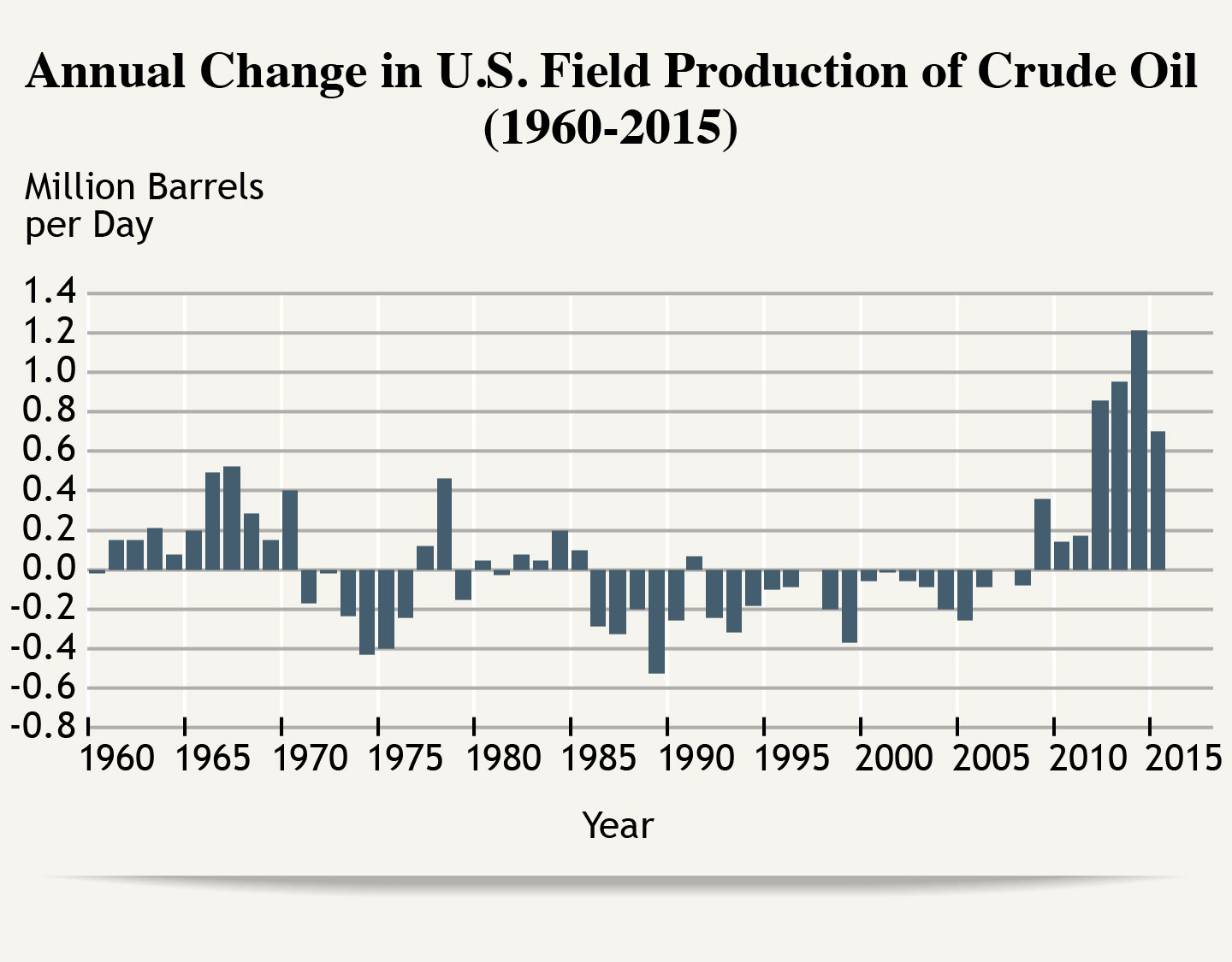© Patrick J. Endres / AlaskaPhotoGraphics.com
Oil
In 2015, the United States got 36% of its energy from petroleum and experts project that the demand for this fuel will increase at least through 2020. In 2015, the U.S. Energy Information Administration (EIA) reported that the United States remained the world’s top producer of petroleum, supplying nearly as much as it consumed. Owing in large part to new recovery methods (hydraulic fracturing and horizontal drilling), U.S. oil production growth in 2014 was the highest in more than 100 years.
EIA projects that domestic crude oil production will remain about 9.4 million barrels/day through 2025, and will rise to 11.3 million barrels/day by 2040, an increase of nearly 20%. According to the EIA, a modest decrease in transportation energy will occur despite an estimated population increase in the range of 50 to 75 million, perhaps as a result of decreased driving per capita, improvements in overall vehicle efficiency and engine performance, and government requirements to increase the use of biofuels.
How long can we maintain our petroleum dependency? Current estimates suggest at least for the next 25 years. Proved U.S. oil reserves now total 39.9 billion barrels,* with more than 3.1 billion barrels discovered since 2012. Extraction of “tight” oil—light crude oil contained in geological formations of shale or sandstone—accounted for only 12% of total U.S. oil production in 2008. By 2012, it made up 35% and is predicted to rise to 50% in the near term.
As of 2015, total world consumption was approximately 94 million barrels per day, about 19 million of which were used by the United States.
The EIA estimates proved conventional crude oil reserves at more than 1.7 trillion barrels worldwide. As of 2015, total world consumption was approximately 94 million barrels per day, about 19 million of which were used by the United States. But simply dividing one number by the other produces a misleading picture because new reserves are discovered and vehicle efficiency changes over time. In the United States, regulations such as the Corporate Average Fuel Economy (CAFE) standards, which oblige manufacturers to develop more efficient vehicles, and research into new transportation fuels, such as biofuels, as well as the increased use of electric vehicles, are expected to reduce our demand for oil.
By 2050, the United States could achieve an 80% reduction of greenhouse gases and petroleum use from 2005 levels using a combination of conventional vehicles, hybrids, biofuels, electric vehicles, fuel cell vehicles, and compressed natural gas vehicles.
* Proved reserves are not the total amount of a resource potentially available. They are the deposits deemed to be cost-effective to extract at present. The total amount of recoverable fossil fuels (or uranium) is governed by the cost of recovery and the price and thus fluctuates over time.
Related topics
Source Material
- Transitions to Alternative Vehicles and Fuels (2013)
- Cost, Effectiveness and Deployment of Fuel Economy Technologies for Light-Duty Vehicles (2015)
- Effects of Diluted Bitumen on Crude Oil Transmission Pipelines: TRB Special Report 311 (2013)
- Best Available and Safest Technologies for Offshore Oil and Gas Operations: Options for Implementation (2013)
- Macondo Deepwater Horizon Blowout: Lessons for Improving Offshore Drilling Safety (2011)
- Induced Seismicity Potential in Energy Technologies (2013)


